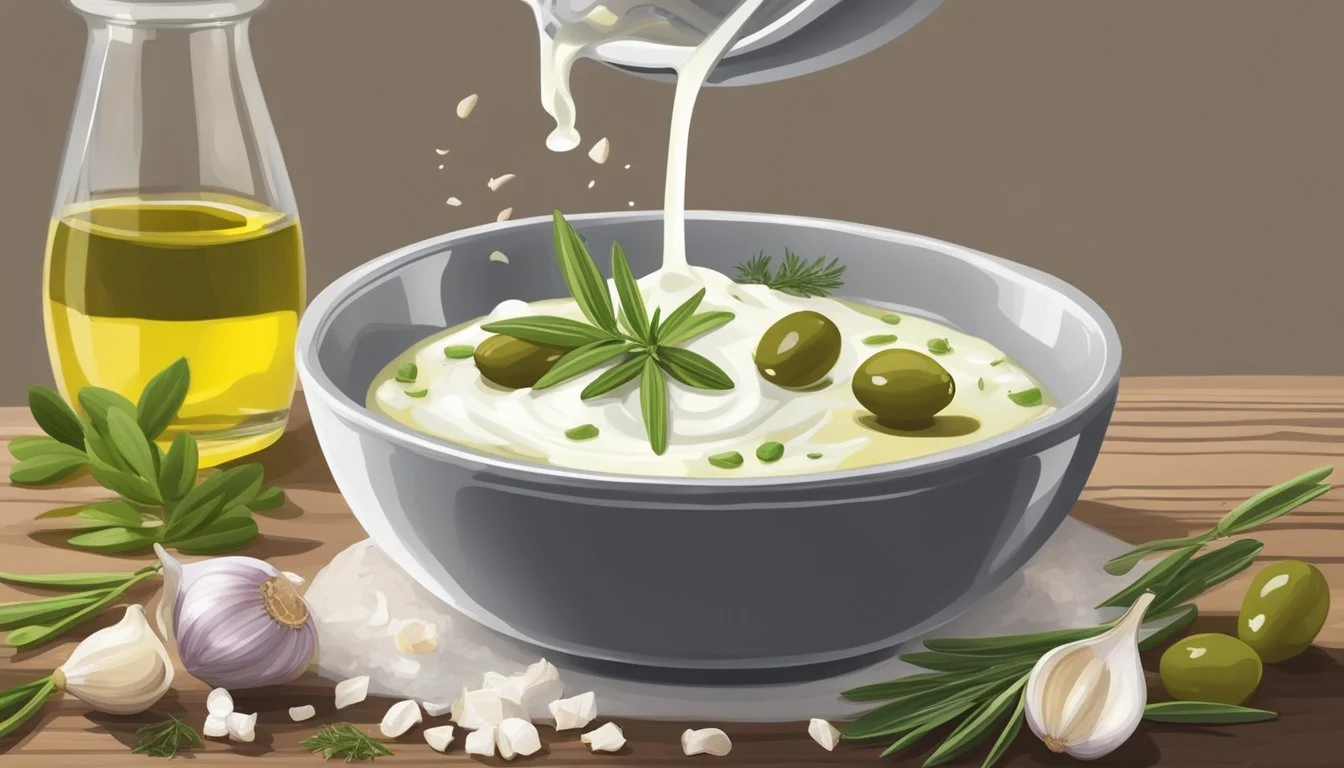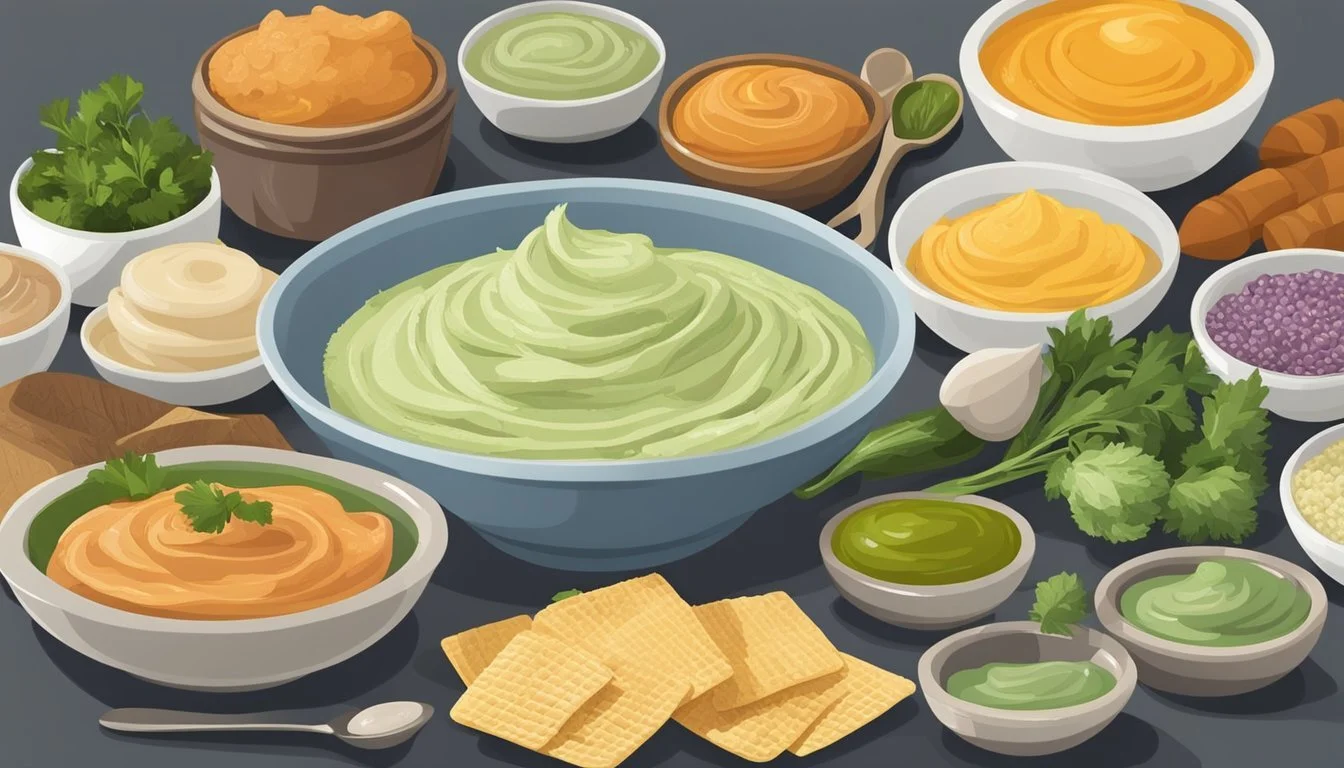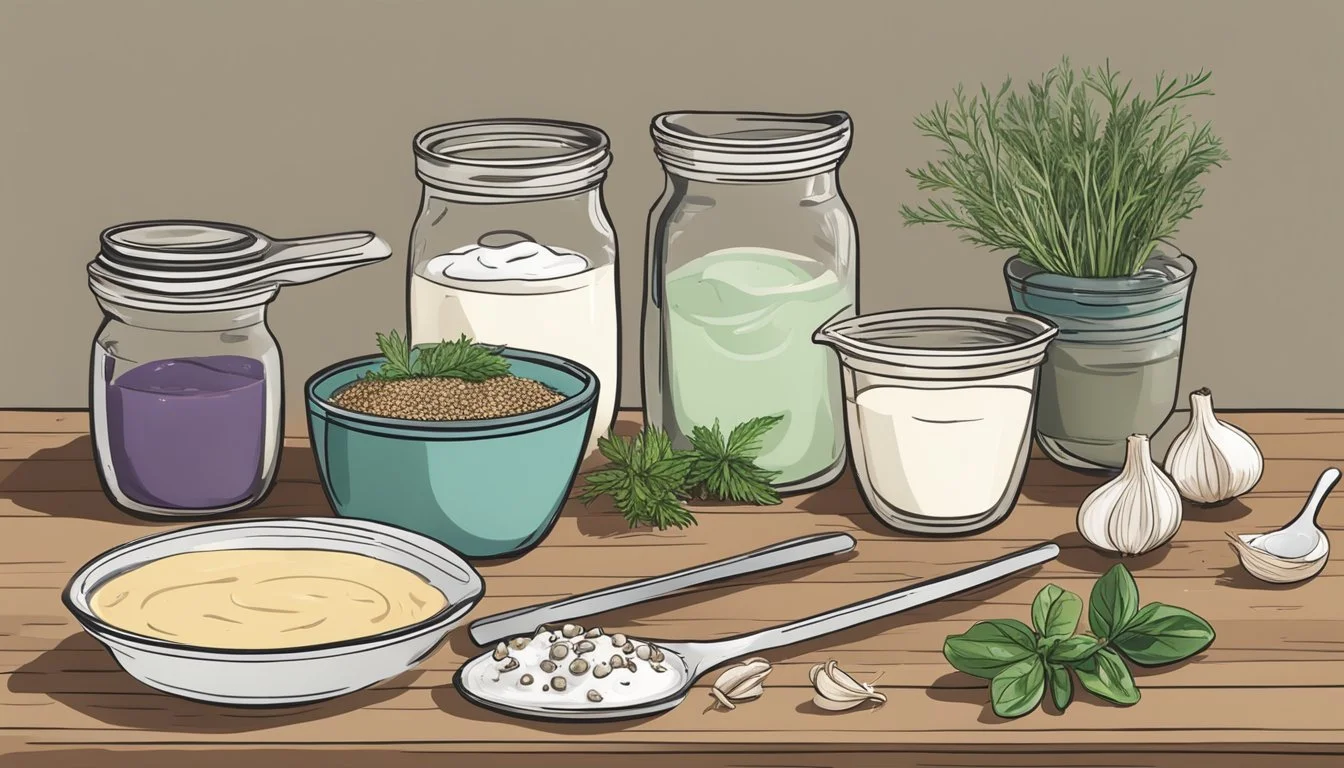How to Measure Ingredients for a Homemade Dip Recipe
Precise Techniques for Perfect Flavor
Creating a homemade dip is both an art and a science. To craft an appetizing creation that impresses guests or simply adds a spark to a snack, precise measurement of ingredients is crucial. The balance of flavors in a dip, whether tangy, herby, or spicy, often hinges on the accuracy of the components added to the mix. A recipe not only guides the cook in combining these elements but also ensures consistency in taste with each preparation.
The foundation of a good dip often begins with a creamy base, such as sour cream or mayonnaise, before layering in a blend of herbs and spices. Each ingredient must be measured with care to respect the intended flavor profile developed by the recipe creator. Utilizing standard measuring tools—spoons for smaller quantities and cups for larger volumes—provides a level of precision that supports the replication of the same delicious results every time.
Additionally, attention to detail during the measuring process can make or break a homemade dip. Seasonings like salt or garlic (What wine goes well with garlic?) powder can easily dominate a dish if overused, overshadowing the subtler notes of dill, onion flakes, or parsley. Meanwhile, ingredients like lemon juice or vinegar require a judicious hand to achieve the right acidic balance that brightens the overall palate. Crafting homemade dips requires a measured approach, ensuring that the final product is as delightful on the tongue as it is to the eye.
Understanding Ingredients
Proper measurement of ingredients is crucial for the perfect balance of flavors and nutrition in a homemade dip. Attention to detail ensures a delightful taste while maintaining a nutritional profile that can accommodate various dietary preferences.
The Role of Base Ingredients
Base ingredients like mayonnaise and sour cream provide the creamy texture foundational to many dips. They serve as a blank canvas for flavors, but their high calorie and fat content call for moderation. Alternatives like Greek yogurt or cream cheese can be used to adjust the consistency and nutritional value. When measuring, one should use standard cup sizes:
1 cup sour cream
Incorporating Fresh Produce
Incorporating garlic and onion adds depth to dips. These should be finely minced to evenly distribute their pungent flavors. Fresh produce can enhance both taste and nutrition:
Garlic: Provides bold flavor and health benefits
Onion: Offers a crisp bite and is low in calories and sugar
Seasonings and Flavor Enhancers
Salt and pepper are fundamental seasonings that enhance the natural flavors of other ingredients. A teaspoon of dried herbs like parsley or dill introduces complexity, while a dash of lemon juice can brighten the overall taste without adding significant calories or sugar.
Balancing Nutrition and Flavor
To balance nutrition with flavor, one can employ substitutions:
Instead of salt, use herbs and spices to reduce sodium intake.
Choose Greek yogurt over sour cream for a protein-rich, lower-fat option.
Manage portions of dips to keep calorie and sugar intake in check.
Preparation Techniques
Proper preparation of ingredients is crucial for a successful homemade dip, as it impacts texture, flavor, and overall quality. The preparation technique should ensure that all components blend well together, with seasoning adjusted to taste. Being efficient with prep time can lead to a dip that not only tastes great but is also visually appealing.
Chopping and Measuring Produce
The cook should begin by finely chopping any produce such as onions, (What wine goes well with onions?) garlic, or herbs, as a finer chop contributes to a smoother texture in the dip. Accurate measuring ensures balanced flavors. They must use sharp knives to chop, and where applicable, use measuring cups for larger quantities and measuring spoons for smaller amounts, following these guidelines:
Herbs: Finely chopped for even distribution.
Onions/Garlic: Minced to avoid overpowering chunks.
Vegetables: Diced consistently for a cohesive texture.
Mixing Ingredients
Once all produce is prepared, the cook should combine the main ingredients in a mixing bowl. The goal is to incorporate elements evenly without overmixing, which can affect the dip's texture:
Base Ingredients: Cream cheese or sour cream should be at room temperature to ensure smooth mixing.
Dry Additives: Seasonings and powdered mixes should be sifted to prevent clumps.
The mixing process should be gentle but thorough, often starting slow and increasing speed as necessary.
Seasoning to Taste
The cook must season the dip carefully, tasting and adjusting as they go. Homemade dips benefit significantly from freshly ground seasonings over pre-ground for improved flavor:
Salt: Start with a pinch and adjust to enhance the other flavors.
Spices: Add gradually, mindful of their potency and total time the flavors have to meld.
Those with dietary restrictions should substitute seasonings attentively, considering the dip's final flavor profile.
Types of Dips and Their Textures
When crafting homemade dips, understanding the diverse textures and base ingredients is crucial for achieving the desired consistency and flavor profile.
Creamy and Thick Dips
Creamy and thick dips typically feature dairy products like cream cheese, mayonnaise, or thick yogurt as the base. Spinach (What wine goes well with spinach?) artichoke dip is a classic example, combining cream cheese or mayonnaise with chopped spinach and artichokes, (What wine goes well with artichokes?) resulting in a rich and indulgent texture. Measurement precision is vital to maintain the luxurious consistency that’s thick enough to cling to a cracker or chip without being overly stiff.
Light and Airy Dips
Light and airy dips provide a more delicate mouthfeel. These are often whipped to incorporate air and create a fluffy texture. An example of this category is herbed yogurt dips that employ a lighter yogurt base, infused with fresh herbs and perhaps a touch of garlic for flavor. Accurate measurements of herbs and aromatics ensure these dips are flavorful yet balanced, without overpowering the airiness of the whipped dairy.
Chunky and Robust Dips
Chunky and robust dips are identifiable by their hearty ingredients and substantial textures. Guacamole, composed of mashed avocados, diced tomatoes, and onions, exemplifies this category with its recognizable and satisfying chunkiness. It's critical to measure ingredients such as onions and tomatoes to maintain a harmony of flavors and a consistent, scoopable texture. Another popular chunky dip is a salsa-style bean dip, which includes a variety of veggies that should be chopped uniformly to enhance the dipping experience.
Serving and Presentation
When serving a homemade dip, the presentation can significantly enhance the experience. The choice of vessels, selection of accompaniments, and the art of arrangement and garnishing come together to create an inviting display.
Choosing the Right Vessels
Selecting the appropriate serving bowl is crucial—it should be deep enough to hold the dip without spilling, yet wide enough to facilitate easy scooping. For a large gathering, opt for multiple small bowls rather than a single large one to ensure easy access for all guests. If one is serving different types of dips, they can consider placing each in a separate vessel to avoid mixing of flavors.
Dip Accompaniments
A variety of accompaniments allows guests to enjoy the dip to their preference. Present a range of options including:
Crackers and pita bread for those who enjoy a crunchy, savory base
Chips, such as potato chips and tortilla chips, are classic pairings
Pretzels, which offer a salty twist
Fresh veggies, such as celery sticks, cucumber spears, and bell pepper slices, for a nutritious crunch
One might arrange these accompaniments on a platter around the serving vessels for easy dipping.
Arrangement and Garnishing
Arrange the accompaniments aesthetically around the dip, with consideration for color and texture to create an appealing visual. For instance, they can alternately place vibrant vegetable sticks next to neutral-colored crackers. Garnishing the dip with a sprinkle of herbs or a drizzle of olive oil adds a touch of elegance and can enhance flavor. Remember to provide serving utensils, such as spoons or spreaders, for the convenience of guests.
Storage and Shelf Life
When preparing homemade dips, understanding their storage and shelf life is paramount for maintaining flavor and safety. Proper refrigeration and freezing can extend the shelf life, whereas signs of spoilage indicate when a dip should no longer be consumed.
Refrigeration and Freezing Tips
Refrigeration:
Airtight Container: Use an airtight container to store dips in the fridge. Oxygen can degrade the quality and shorten the shelf life.
Temperature: Keep the refrigerator temperature at or below 40°F (4°C) to ensure that dairy-based dips like sour cream, French onion, yogurt, and cream cheese dips last for approximately 5-7 days.
Labeling: Always label homemade dips with the date of storage to track their freshness period.
Freezing:
Freezer-safe Container: Store dips in a freezer-safe bag or container to avoid freezer burn and preserve freshness.
Spinach dip, for example, can last up to 3 months in the freezer when stored correctly.
Thawing: Thaw frozen dips in the refrigerator overnight rather than at room temperature to maintain their texture and prevent bacterial growth.
Signs of Spoilage
Odor: A sour or off smell is a clear indicator that a dip has gone bad.
Mold: Visible mold growth, regardless of the amount, means the dip must be discarded.
Texture Changes: If the consistency of the dip becomes watery or unusually thickened, it may suggest spoilage.
One should always exercise caution and discard any dip that shows these signs, even if this occurs before the expected shelf life has been reached.
Recipe Variations and Ideas
Creating a homemade dip offers an opportunity to customize flavors to match one's preferences and dietary needs. This section explores traditional recipes, creative modifications, and options for specific diets.
Classic Variations
For a Classic Spinach Dip, use frozen chopped spinach, thawed and drained, and mix it with sour cream, mayonnaise, and seasoning such as garlic powder, salt, and pepper. To make a traditional Vegetable Dip, combine sour cream with dried herbs like dill, parsley, and onion powder. For a Chip Dip with a kick, one might consider a Buffalo Dip; it requires mixing hot sauce with cream cheese, shredded chicken, and shredded cheese, then baking until bubbly.
Spinach Dip:
Frozen spinach
Sour cream
Mayonnaise
Garlic powder
Vegetable Dip:
Sour cream
Dried dill
Parsley
Onion powder
Buffalo Dip:
Hot sauce
Cream cheese
Cooked chicken
Shredded cheese
Innovative Twists
To offer an Innovative Twist to the classic dip, one could incorporate unique ingredients. An Easy Veggie Dip Recipe could be enhanced with finely diced jalapeños or red pepper flakes for heat. Alternatively, a Dill Dip might include fresh lemon zest for a brighter flavor. When making Homemade Hummus, adding roasted red peppers or caramelized onions can offer new taste dimensions.
Veggie Dip with a Kick:
Diced jalapeños or red pepper flakes.
Lemon Zest Dill Dip:
Fresh lemon zest added to the dill dip.
Roasted red peppers or caramelized onions mixed into the hummus recipe.
Diet-Specific Adaptations
For individuals with dietary restrictions, Diet-Specific Adaptations of dip recipes are essential. A gluten-free Chip Dip might use a base of Greek yogurt instead of sour cream and avoid any additives that contain gluten. For a dairy-free Hummus Recipe, one could use olive oil and tahini as the base, emphasizing the addition of garlic and lemon for flavor. Plant-based cheeses can replace traditional cheeses in recipes like the Buffalo Dip for vegan adaptations.
Gluten-Free Chip Dip:
Greek yogurt
Gluten-free seasonings
Tahini
Garlic
Lemon
Vegan Buffalo Dip:
Plant-based cream cheese
Plant-based shredded cheese
Practical Tips and Tricks
Preparing homemade dips can be both an art and a science, with the right techniques and ingredient handling enhancing the end result. This section delves into practical ways to improve the dip-making process from kitchen efficiency to flavor enhancement and time management.
Efficient Use of Kitchen Tools
Using the right kitchen tools can streamline the process of making dips. For instance, a food processor is a versatile tool that can quickly blend ingredients to the desired consistency. For measuring semi-solid ingredients like sour cream, an adjustable measuring cup with a plunger is recommended for precision and ease. When it comes to mixing, a slow cooker can serve as a great tool for dips that require heating, allowing flavors to meld over time without constant supervision.
Enhancing Flavors With Simple Ingredients
A well-stocked spice cabinet is the secret to flavorful dips. Common spices such as garlic powder and onion powder inject a robust flavor, while kosher salt can enhance the natural taste of the ingredients. For those seeking a bit of heat, a pinch of cayenne pepper can go a long way. Incorporating fresh herbs like fresh dill can offer a bright, garden-fresh note. Additionally, for a depth of flavor, one might consider roasting fresh garlic to add a sweet and caramelized taste.
Ingredients Tips Garlic Powder Use sparingly and balance with kosher salt. Fresh Garlic Roast for a sweeter profile. Cayenne Pepper A pinch can significantly increase heat. Fresh Dill Chop finely and add towards the end of prep.
Making Dips Ahead of Time
Creating dips ahead of time can greatly benefit their flavor, as it allows the spices and seasonings to fully infuse into the base. When storing dips in the refrigerator, use an airtight container to maintain freshness. Dips based on dairy, like those using sour cream or yogurt, can often be made a day in advance, which will let the flavors from your spice cabinet, like garlic powder and kosher salt, meld together more effectively. If using fresh herbs, consider adding them shortly before serving to ensure they retain their vibrancy.
Engaging with Your Audience
In the world of cooking and sharing homemade dip recipes, connecting with the audience can amplify its reach and convert a simple appetizer recipe into a crowd pleaser. This is achievable through active sharing on social platforms and responding to feedback with grace.
Sharing on Social Platforms
The chef might engage their audience by posting the dip recipe on various social platforms. They can create pinterest boards with appealing images of the dip, which is particularly effective for visual platforms. Facebook is another excellent avenue for sharing; a quick post with a high-quality photo can entice the audience to try the recipe. Including affiliate links for purchasing ingredients can also be beneficial. Additionally, sharing a recipe video might help to clarify steps for the audience and serve as an engaging tool.
Responding to Feedback
It is important for the chef to actively respond to the audience's feedback. Whether the response is a simple thank you or a more in-depth discussion about recipe variations, acknowledgment can establish trust and credibility. The chef should take both positive and negative comments with a professional demeanor, showing that they value the audience's input and are committed to delivering high-quality content.







